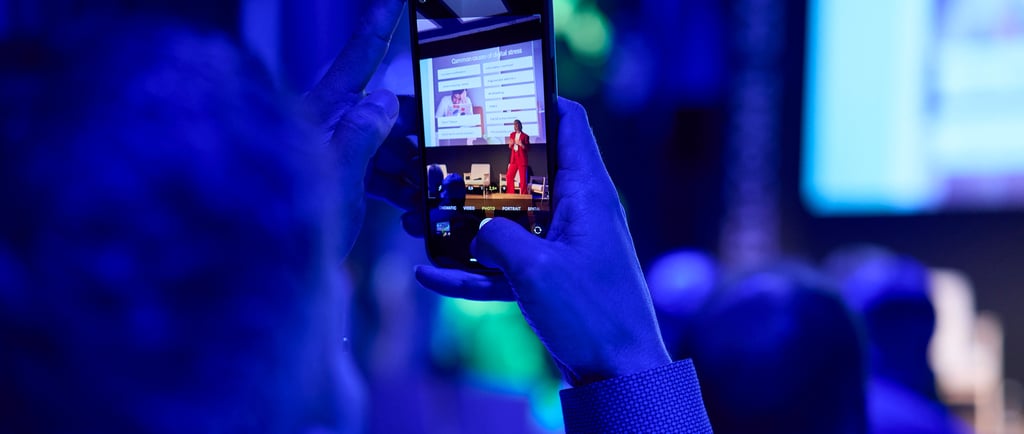Beyond the Promise of Productivity:
The Power of Intentional Tech Use
6/30/20253 min read


It’s striking how often these (AI and digital workplace tools) tools promise connection or productivity—and yet require deliberate habits to actually deliver on that promise.
Without awareness, it’s easy to drift into ways of working that quietly erode focus, wellbeing and trust, but it's equally true that by applying some intention and attention on how we use our tech we can build better habits to ensure our tech use is aligned with our priorities.
This thought captures a pivotal tension in the modern workplace. Digital tools—whether AI assistants, messaging platforms, or collaboration apps—are marketed as efficiency boosters. Yet, without conscious habits driving their use, they can degrade what they set out to enhance: our attention, mental space, and deepest performance.
1. Shrinking Attention in the Digital Era
Dr. Gloria Mark’s research reveals that office workers only stay focused for around 47 seconds before being pulled away, up from an average of 2.5 minutes before the smartphone age began.
Another study found the average human attention span dropped from 12 seconds in 2000 to 8 seconds in 2020—shorter than that of a goldfish—thanks to constant digital stimulus. This relentless distraction undermines our ability to think deeply, reflect, and solve complex problems.
2. Overload, FOMO, and Mental Exhaustion
A 2024 study on digital workplace intensity identified key strains: hyperconnectivity, information overload, techno-hassles, FOMO, and “techno‑strain”, all linked to burnout and poor wellbeing.
A survey of remote workers highlighted that information overload and fear of missing out significantly correlate with stress, anxiety, and exhaustion. These aren’t isolated discomforts - they erode mental space and leave professionals voicing complaints like, “I have no head space left.”
3. The Paradox of Connection
Notifications and AI tools promise to keep us connected, responsive, and in sync. But in the absence of habits governing attention, these very tools can perpetuate continuous partial attention—a state of perpetual alertness that fractures focus and contributes to burnout.
A 2016 experiment found participants felt less distracted and more productive during a day without notifications—but also less connected and anxious about missing information. The paradox is clear: our tools need guardrails, or they’ll guard nothing.
Building Deliberate Habits for Intentional Tech Use
1. Define Focus Windows
Set uninterrupted time blocks (e.g., 90-minute “deep work” sessions) where notifications are silenced. Schedule collaborative or reactive work outside these windows.
2. Customise Notifications
Only enable alerts for essential tasks or people. Treat less important channels as optional - check them intentionally, not impulsively.
3. Batch Communication
Process email and messages in designated time slots. This combats the “always-on” expectation while ensuring meaningful responsiveness.
4. Create Tech-Free Zones
Dedicate certain spaces or times (e.g., during meals or evenings) for no screens. These boundaries carve out mental breathing room.
5. Practice Micro-Rest
Take brief, device-free breaks to reset focus. A few minutes away from screens can restore clarity and sustain attention.
6. Use AI Intentionally
Let AI handle routine tasks like summaries or scheduling - but only when you’ve consciously triggered it, not on autopilot.
7. Reflect Weekly
Ask yourself: “Did my tech help me work smarter, or did I end up working more?” Transparency drives evolution. Tune what’s working and change what isn’t.
Final Perspective: From Drift to Intentionality
Digital tools themselves don’t compromise wellbeing - they amplify our habits. Left unmanaged, these tools can gradually erode mental clarity, focus, and trust in ourselves and our teams.
But with deliberate intention - structuring usage, aligning tools with goals, and protecting mental space - we can reclaim tech as a productivity ally rather than a focus thief. For leaders and professionals, mastering this balance is not optional - it’s essential to thrive in an increasingly digital landscape.
By consciously aligning your tech habits with your top priorities, you can preserve your attention, protect your headspace, and foster a culture that values deep focus and trust over constant connectivity.

Lina Žemaitytė Kirkman
Keep in touch
© 2025. All rights reserved. Privacy Policy
